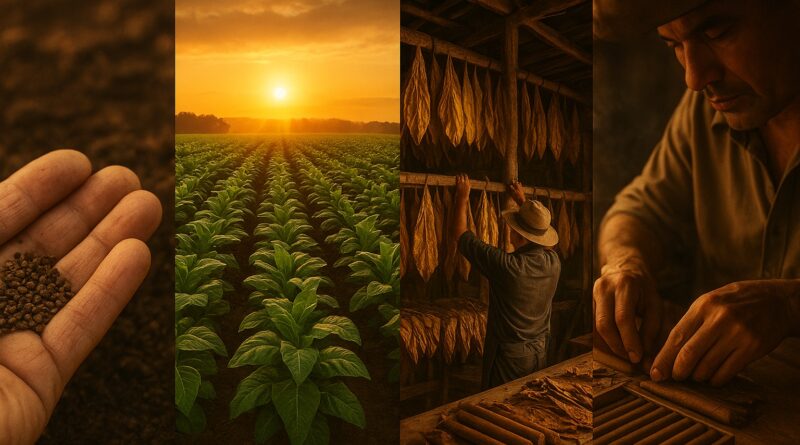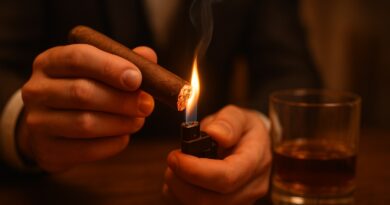From Seed to Smoke: How Premium Cigars Are Made
There’s a quiet reverence in every draw of a well-made cigar, a connection to centuries of craftsmanship, tradition, and patience. Behind that perfectly balanced aroma and burn lies an intricate process that transforms a tiny seed into a work of art. The making of a premium cigar isn’t industrial; it’s agricultural, artisanal, and deeply human. From soil to smoke, each stage is a ritual of care and mastery.
It begins in the fields, long before a leaf ever reaches a rolling table. Tobacco plants are delicate and demanding. The seeds are almost microscopic, and only the healthiest are chosen for planting. Once sown, they’re nurtured under controlled conditions before being transplanted into the rich, sun-drenched soils of regions like Nicaragua, the Dominican Republic, Honduras, or Cuba. Each region imparts its own character to the leaf, its flavor, its burn, its strength. Farmers carefully monitor every stage, adjusting water, sunlight, and nutrients with precision.
When harvest season arrives, timing becomes everything. Leaves from the top of the plant develop more strength and spice, while the lower leaves provide aroma and smooth combustion. Each one is handpicked and hung in curing barns where they dry slowly in warm, ventilated air. This stage transforms the bright green leaves into shades of gold and brown, and the raw scent of vegetation turns into that deep, familiar tobacco aroma.
Once cured, the tobacco begins its most transformative stage: fermentation. In large stacks called pilones, the leaves are moistened and layered so natural microbial activity can develop. Over weeks or months, heat builds up inside the stacks, breaking down impurities and mellowing the flavor. The process is carefully monitored and controlled, turned and restacked as needed. Fermentation gives the tobacco its balance and removes harshness, unlocking the complex flavors that define fine cigars.
After fermentation, the leaves are sorted by color, size, and texture, then aged in cedar-lined rooms. Aging can last months or even years. During this time, the tobacco continues to refine itself, developing harmony and depth. Patience defines this stage; rushing it would rob the cigar of the smoothness and character that connoisseurs expect.
When the leaves are ready, the process moves to the rolling floor. Skilled rollers, called torcedores, transform aged tobacco into finished cigars. Each cigar is made from three main components: the filler, the binder, and the wrapper. The filler provides strength and flavor, the binder holds the structure, and the wrapper gives the cigar its elegance and first impression. Rolling requires exceptional skill. Every movement is deliberate, every touch judged by feel alone. A cigar that draws perfectly and burns evenly is a mark of true craftsmanship.
Once rolled, cigars rest again in aging rooms so the different tobaccos within can marry. This final resting period refines the flavor, ensuring smoothness and balance. Before they leave the factory, each cigar is inspected for appearance, aroma, and construction. Only those that meet strict quality standards are banded and boxed for sale.
When a cigar finally reaches the smoker, it carries with it the work of hundreds of hands and years of patience. Lighting one is not just an act of indulgence; it’s a way of experiencing a living tradition. Each puff tells the story of the soil, the weather, the farmer, and the artisan. The burn, the draw, the aroma—all are shaped by time and care.
A premium cigar is more than tobacco rolled into shape. It’s a distillation of craftsmanship and culture, a reminder that some of the finest things in life can’t be rushed. From seed to smoke, it is the art of turning nature’s raw elements into something timeless.




